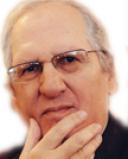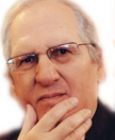
What is it about diabolical crimes like the infamous "Manson family" murders that still fascinate us so?
I was interviewed not long ago for a one-hour television documentary titled Manson's Missing Victims, to be aired this Thursday, December 18, at 9 PM on the Investigation Discovery cable channel. Though I've never met or clinically evaluated Mr. Manson, the producers were interested in my expert commentary and perspective as a practicing forensic psychologist for the Criminal Division of the Los Angeles County Superior Court.
Charles Manson and his murderous hippie "family" are among the most notorious criminals in recent memory. 2009 marks the fortieth anniversary of the Tate-LaBianca killings. Now, four decades later, Manson, 74 and still incarcerated, is the persisting subject of fascination, curiosity, speculation, revulsion, fear and, in some cases, iconic adulation. Why? Their grotesque killings of film director Roman Polanski's pregnant wife actress Sharon Tate, her friends, and the randomly chosen LaBiancas in a different home on the following night, terrorized Los Angeles back in 1969, and dealt the death knell--along with the ugliness a few months later at the Altamont Speedway Free Festival-- to the preceding decade's dreams of "peace and love." These deliberately shocking murders marked the end of innocence of the Woodstock "flower power" generation. It was a stunning and inconceivable confrontation with the reality of evil, which is what still makes these and other startling crimes so fascinating and frightening.
Manson (born in 1934) was already a career criminal by the time he arrived in San

Francisco for the "summer of love." He had spent close to half his life in correctional institutions, where he became increasingly callous, hateful, antisocial, deluded and dangerous. Taking full advantage of the massive influx of naïve adolescent "hippies" flocking to San Francisco in 1967, he soon became a charismatic hippie "guru" to a cult-like group of mainly female, younger followers. From San Francisco, his "family" moved on, finally landed in Los Angeles, where, at his behest, they committed the gruesome mass murder. Indeed, there is reason to suspect that they may have previously murdered other victims as well, as suggested in Manson's Missing Victims.
The program includes interviews with Los Angeles prosecutor Stephen Kay, who assisted Vincent Bugliosi on the Tate-LaBianca murder case, victim Sharon Tate's sister, and former Manson "family" member Barbara Hoyt among others. I haven't previewed it yet, so we'll see how it all came together this Thursday evening at 9 PM. Please note that from what I've heard, my own interview will NOT be part of this particular program at this time. Manson's Missing Victims will be re-broadcast on Friday at midnight, Saturday and Sunday at 3 PM, and Monday morning at 4 AM. You are invited to post your reactions, reviews and comments on the program right here at Psychology Today blogs.


